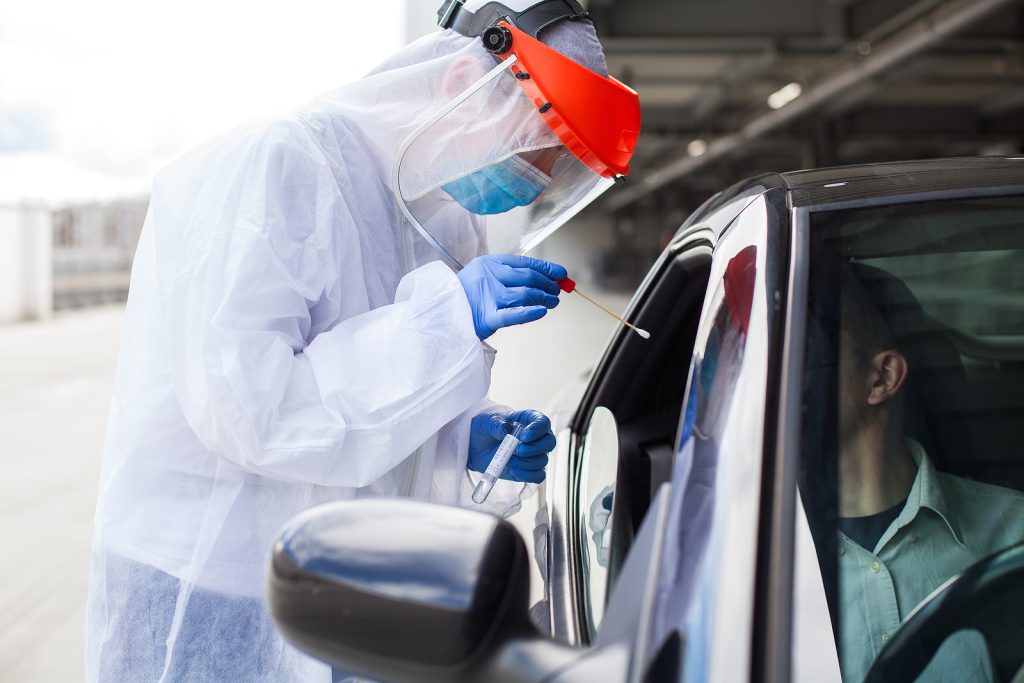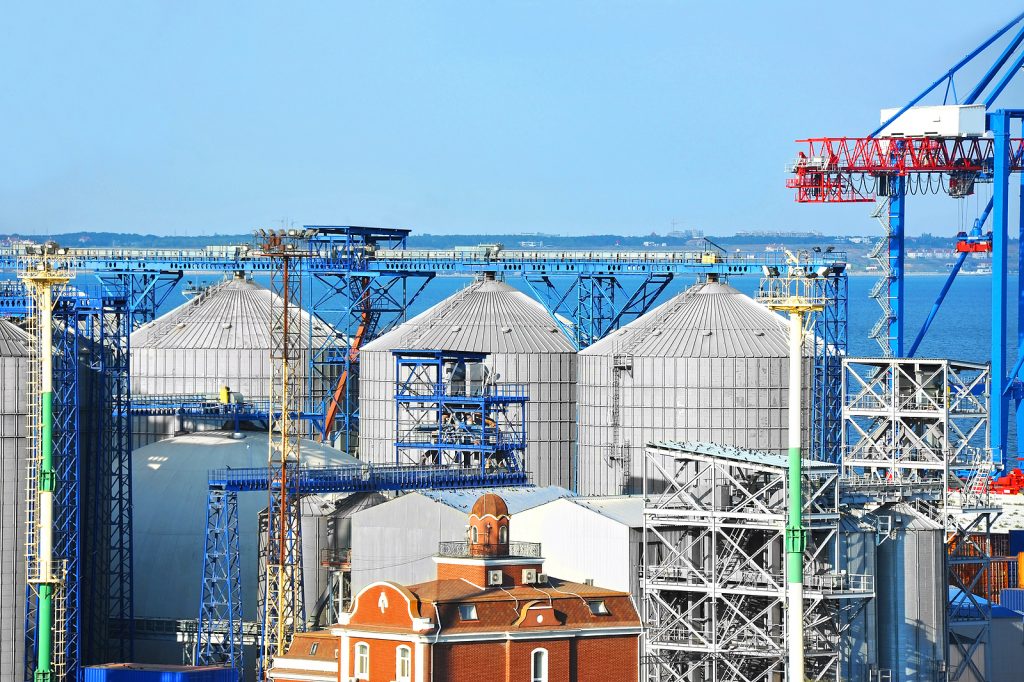The European Union finds itself at an historical turning point. In fact, we may well have entered the era of ‘European permacrisis’ – a permanent state of crisis and subsequent shocks challenging our very foundations and institutional architecture.
‘Permacrisis’ is a newly-fashionable portmanteau word describing the sense of continuously stumbling from one shock to another, be it war, inflation or political instability. Little wonder, then, that it was named 2022’s Word of the Year by the Collins Dictionary. This year has seen tectonic shifts in global geopolitics with instability and crises dominating the international arena, following, interlinking and overlapping one another.
- Introducing the European Political Community
- It’s time for the EU and Three Seas Initiative to align their goals
- EU unveils Global Gateway, its alternative to China’s BRI
As a result, we are living through the most transformational period Europe has experienced since World War II. This European permacrisis has been built on many elements. The eurozone crisis sending shockwaves through our economies and cohesion in 2008 and 2009. The massive influx of refugees and migrants from 2015, threatening to overwhelm our asylum and migration systems. European unity being challenged, yet standing firm, following the Brexit referendum in 2016 and the UK’s subsequent departure from the European Union.
Then, the Covid-19 pandemic hit in 2020, putting our health and social systems under enormous strain, shutting down our economies and affecting our cherished right to the free movement of people and goods. And Russia’s illegal military aggression against Ukraine is a most recent attempt to jeopardise our fundamental values of freedom and democracy and our whole rules-based and multilateral international order.
At the same time, as these crises have crashed over us like waves on a stormy beach, we cannot afford to neglect longer-term megatrends like the threats and impacts on our social and economic system posed by climate change, digitalisation, the global decline in democratic governance or shifts in demography – especially worthy of note given that the human population has just reached eight billion people.
Even as we work to overcome these challenges, in the short and long term, we cannot know what will happen tomorrow. One of the few consistencies in this world of permacrisis is its ‘Brittle, Anxious, Non-linear and Incomprehensible’ nature: one cannot foresee what the next shock over the horizon will entail. What one can reliably state is that these challenges will arise one way or another, and probably in increasing numbers and with shorter time spans between them over the next decades. This, then, is what one must take into account when asked to reflect on a ‘New European Architecture’. So with that in mind, it is worth considering two interlinked ideas.
First, the European Union cannot afford to be in constant firefighting mode when it comes to coping with shocks and crises. Rather, to get on top of problems, it needs to look forward and be better prepared for the opportunities and challenges ahead.
Second, in order to enable this change, a more conducive institutional structure is needed, seizing the opportunity provided by ongoing and future challenges. In other words, it is time to design a New European Architecture based on resilience and preparedness.
Today more than ever before, the European permacrisis offers a unique opportunity to mainstream the identification of risks in policymaking, for instance by anticipating different possible future scenarios. This is the central tenet of strategic foresight.
Having recognised these needs back in 2019, the European Commission, under incoming President Ursula von der Leyen, decided to include specific responsibility for strategic foresight as part of my portfolio as Vice-President.
The aim was to encourage the integration of anticipatory governance systematically into the Commission’s policy- and decision-making, in order to use it to inform major initiatives in the Commission Work Programme and detect issues of critical interest.
Since foresight is a collective and inclusive process, the EU-wide Foresight Network of ‘Ministers for the Future’ was launched to pool and nurture these new capabilities of member states. Most Ministers for the Future are also members of the General Affairs Council, which has become an increasingly strategic formation over the years, also in light of its work preparing for European Council meetings. In turn, this process provides a vital contribution to the second, longer-term ambition of designing a New European Architecture.
At its heart should lie two load-bearing pillars, Resilience and Open Strategic Autonomy, with strategic foresight playing a pivotal role in exploring, anticipating and shaping the future of Europe and of the world.

Resilience, the first pillar of the New European Architecture
In September 2020, in the midst of the Covid-19 pandemic, the Commission published its first Strategic Foresight Report. Titled ‘Strategic Foresight – Charting the course towards a more resilient Europe’, the report sought to learn early lessons from the pandemic, establishing ‘resilience’ as a new compass for all EU policies.
In a context where pharmaceutical products and protective equipment were scarce, the early days of the Covid-19 crisis underlined that Europe needed to reinforce its resilience, strengthening its ability not only to recover from crises but also to emerge stronger and undergo broader transitions in a sustainable, fair and democratic manner.
With the global pandemic challenging the momentum towards achieving the twin green and digital transitions, identified in 2019 as two of the biggest priorities for the incoming Commission, the 2020 Strategic Foresight Report therefore focused on informing resilience-enhancing policies across four interrelated dimensions, namely social and economic, geopolitical, green, and digital.
Thus, resilience emerged as a new and crucial strategic pillar in EU policymaking. This is key, as policies benefiting from strategic foresight can better mitigate the impact of crises on relevant megatrends, strengthening the capacities revealed by the crisis, while opening up new opportunities and making Europe more resilient. A straight line can be drawn from this realisation to the creation of the Recovery and Resilience Facility, the centrepiece of our NextGenerationEU recovery plan – a de facto second budget to foster reforms and investment in the member states in order to boost their resilience.
The Covid-19 crisis exposed a number of vulnerabilities but also capacities underpinning resilience in the EU and the member states. For instance, after an uneasy start, the EU and its member states, facilitated by the Commission, put on a united front and overcame the initial knee-jerk competition for scarce medical resources and unilateral action by member states in the Single Market and Schengen Area, quickly transitioning into improved cooperation and coordination. However, at the beginning, preparedness and prevention, early warning systems and coordination structures had come under enormous strain.
Seeking to learn from this, the 2020 Strategic Foresight Report also introduced the idea of a new tool, called Resilience Dashboards, to monitor and assess resilience. Resilience Dashboards include a set of indicators of vulnerabilities and resilience capacities at EU and member state level, helping to anticipate developments likely to have adverse impacts, or opportunities which can contribute to enhancing the ability of society to adapt.
The choice of this indicator set was informed by strategic foresight, as highlighted for instance by the focus on energy and critical raw materials dependence already in 2020. Despite facing some initial institutional inertia, this new tool has since become part of the European Semester cycle of economic governance coordination and has become a good example of embedding foresight into policymaking.
An integrated approach is key to building resilience. For example, the upcoming EU’s Disaster Resilience Goals, designed to support prevention and preparedness actions in the event of major disasters, are vital at a time when we are experiencing first-hand the increasingly severe effects of climate change, from wildfires to floods. With climate change identified as a key megatrend, they can also help further put resilience at the heart of EU policymaking and represent a tangible and action-oriented application of the Strategic Foresight Reports.

Open Strategic Autonomy, the second pillar of the New European Architecture
With its brutal and unjustified aggression against Ukraine, Russia has tried to divide Europe. However, it has managed to achieve the polar opposite. Countries in Central and Eastern Europe have proven their ability to welcome with open arms the millions of people fleeing the violence in Ukraine.
In addition, Russia’s actions have reinvigorated the European security landscape. Denmark has decided to join the EU’s defence cooperation. Finland and Sweden have applied to join NATO – not a development many would have predicted a year ago. Defence budgets are on the rise throughout Europe, with more countries looking to meet the NATO commitment of spending two per cent of national GDP.
Moreover, as the Russian war against Ukraine further polarises the multilateral system (with some suggesting it is leading to the weakening of the UN and the OSCE), NATO and the EU have stepped up cooperation at all levels, proving that the transatlantic partnership remains at the heart of Europe’s security architecture. Russia’s invasion has instilled further urgency in the need to strengthen the EU’s role as a global security actor in a world where the very concept of security is being reshaped – one of the fourteen megatrends of the Commission’s Megatrends Hub.
We are witnessing the weaponisation of new policy areas: vaccines, energy, migration, food, even information. For example, Russia’s actions in the Black Sea, and its efforts to sabotage Ukrainian ports, have contributed to the global food crisis by preventing the export of grain, despite the best efforts of the Black Sea Grain Initiative.
The conflict has also dramatically demonstrated how EU over-dependencies can become critical strategic vulnerabilities. Our reliance on Russian energy, for instance, presented Europe with significant problems when Putin decided to switch off the taps, provoking a rapid, far-reaching and unified response. With one eye on the future, we likewise need to ensure secure supplies of critical raw materials, both by increasing domestic production and by diversifying external sources.
Here is where open strategic autonomy, the second strategic pillar of a possible New European Architecture, comes into play. Europe, in cooperation with its international partners, should be fully able to act in a more hostile international environment and maintain its leadership on the world stage.
In this context, to identify early signs of change on a global scale which are not yet on the policy radar due to how quickly shifts in the international, economical and geopolitical landscape can occur, the Commission launched a horizon scanning tool in 2022. This means that foresight experts from all EU institutions convene regularly to detect and validate ‘weak signals’ that are likely to turn into new trends challenging the European Union and our policymaking.
We need continuous monitoring of these, and I present the results of this horizon scanning to the College of Commissioners on a regular basis. For instance, a recent round of horizon scanning singled out the battle of narratives between the European Union and China in terms of global issues, values and rights as a harbinger of a fracture in global supply chains and a general weakening of multilateral system. This battle of narratives is also increasingly becoming a ‘battle of offers’, whereby China, also through assertive economic policies, is leveraging its economic and relational power to curry favour with third countries.
In response, we can look at the 10 areas of action outlined in the 2021 Strategic Foresight Report. Tellingly, these included ensuring sustainable and resilient health and food systems, securing decarbonised and affordable energy and securing and diversifying supply of critical raw materials, but also reinvigorating multilateralism.
In this context, fostering the European Political Community is part of further strengthening our open strategic autonomy. On top of this, we need to step up our game in a number of areas.
First, with a steep change in defence and security already underway in the EU, we need to be more strategic in terms of our capabilities. The Strategic Compass, designed to strengthen the EU’s security and defence policy by 2030, is an important first step.
Second, we need to take a more geopolitical perspective when it comes to the twin green and digital transitions. This was the focus of the 2022 Strategic Foresight Report, which brought a forward-looking and comprehensive perspective to the interplay between the twin transitions in the run up to 2050.
And third, we need to be more strategic in dealings with the rest of the world and consolidate our partnerships, while staying committed to a vision of a world that is multi-lateral rather than one which is multi-polar. This will help us reduce the strategic dependencies laid bare by both the pandemic and the war in Ukraine.
For example, Europe is striving to reduce its dependence on Russian energy. In 2021, the EU imported more than 40 per cent of its total gas consumption from Russia. Thanks to a unified and determined response, we have already managed to slash that to 7.5 per cent, while doubling our imports of LNG from the United States.
Norway, meanwhile, has become the most important source of pipeline gas imports to the EU. In addition, EU member states have agreed to cut their gas consumption by 15 per cent this winter.
With critical raw materials, our over-dependence on imports is much more extreme than on Russian energy, up to 99 per cent in some instances. And they often come from countries which do not necessarily hold the same fundamental values as we do.
A secure and sustainable supply of raw materials is a prerequisite for achieving the twin green and digital transitions because they are required for new technologies in strategic sectors, such as e-mobility, renewable energy, security and defence.
As a concrete example of the impact of strategic foresight on our Work Programme, the European Commission is working on a proposal for a European Critical Raw Materials Act, with the use of strategic foresight in order to be more self-sufficient in this area. This includes striking the right balance between nurturing our own industrial base, from mining to refining and recycling, and the diversification of sources of supply by creating strategic partnerships.
Pursuing raw materials diplomacy, especially vis-à-vis like-minded partners and countries, such as Ukraine, the United States, Canada, Norway, Greenland, and in the Western Balkans, is an important part of it. This is being done to promote the highest sustainability standards in terms of environmental, social and governance performance.

Conclusions
The European Union finds itself at an historical turning point. In fact, we may well have entered the era of ‘European permacrisis’ – a permanent state of crisis and subsequent shocks challenging our very foundations and institutional architecture.
But with every crisis comes opportunity. Challenges can serve as catalysts to speed-up the long-term, generational changes our economies and societies are currently undergoing.
To successfully cope with an evolving geopolitical reality and pursue not only the twin green and digital transitions but also our long-term political goals, such as peace and security on our continent, consolidating our position as a leading economic and political actor, and preserving the highest social standards for all, we will need to take a more geopolitical perspective when it comes to our European policies.
This means also mainstreaming Europe’s resilience and open strategic autonomy in all our work. If we can do so, they can act as building blocks for this New Architecture, with strategic foresight acting as the architect. For that approach to be successful, we must recognise that foresight requires a collective process involving EU and international institutions, member states, think tanks, academia, industry and civil society. Together we can make a difference.
This article was first published by the Aspen Institute Romania in its report, A World in Flux – Towards a New European Architecture. Copies of the full report can be downloaded here.
Unlike many news and information platforms, Emerging Europe is free to read, and always will be. There is no paywall here. We are independent, not affiliated with nor representing any political party or business organisation. We want the very best for emerging Europe, nothing more, nothing less. Your support will help us continue to spread the word about this amazing region.
You can contribute here. Thank you.



Add Comment